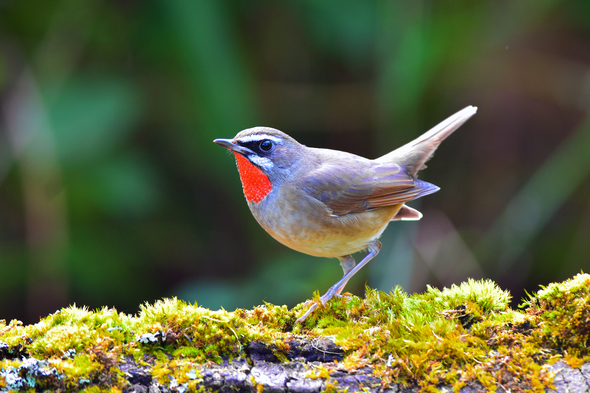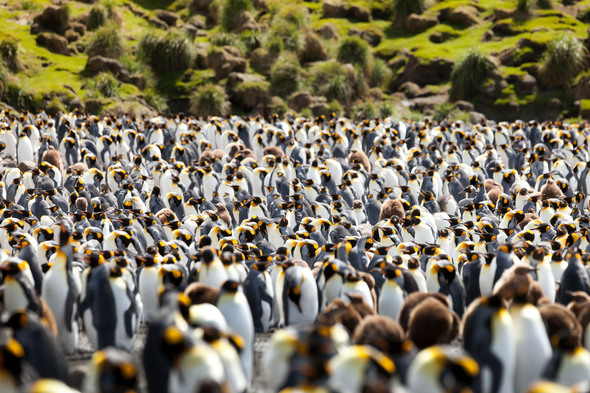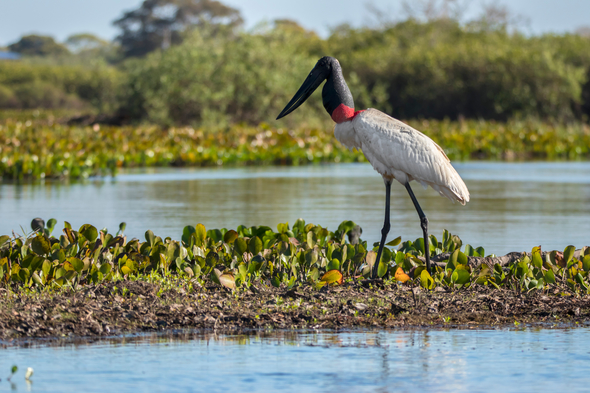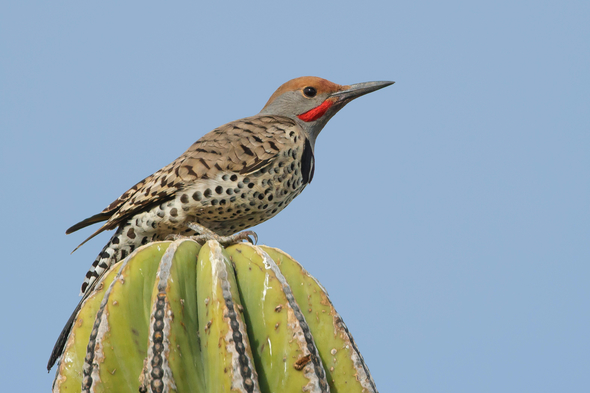Travelling by ship opens up a whole world of remote bird habitats and island sanctuaries that you simply can't reach by any other means of transport, and you'll be accompanied on your expedition by onboard ornithologists and naturalists to help you get the most out of your trip. Zodiac excursions will get you up close to coves and cliffs teeming with seabirds, while landings ashore will allow you to access inland habitats and nesting sites.

From the colourful cloud forests of Costa Rica to the windswept penguin colonies of South Georgia, here is our guide to 8 of the world's best birdwatching cruise destinations

1. Costa Rica & Panama
For such a small country, Costa Rica boasts an incredible diversity of habitats and wildlife, with more than 850 bird species identified to date. Along with a colourful cornucopia of toucans and macaws, you'll also have the chance to spot various species of hummingbird and trogon, including the beautiful resplendent quetzal, plus a host of other creatures, from mischievous capuchin monkeys and iridescent tree frogs to endearingly ponderous sloths.

Expeditions to Costa Rica often include time in Panama too, where you can see magnificent frigatebirds, brown pelicans, yellow warblers and more. Even the bustling Panama Canal is rich in birdlife, especially the area around the man-made Gatún Lake. You will sometimes also find expeditions venturing into the remote and inaccessible Darién Gap, home to species including harpy eagles, red-and-green macaws and scarlet-browed tanagers.

2. New Zealand's subantarctic islands
Birders in the know flock to New Zealand's remote subantarctic islands in search of an incredible 126 species of bird, including the rare yellow-eyed penguin. Expeditions to these islands are pretty rare, so make sure you book well in advance to secure a place on board. Different island groups support different species: the Snares Islands are home to crested penguins and Buller's albatross, the Antipodes Islands boast species including the endemic Reischek's parakeet and erect-crested penguins, Campbell Island is the nesting site for the southern royal albatross, and the Auckland Islands provide a habitat for red-crowned parakeets, shy albatross and Gibson's wandering albatross.

Most itineraries will usually also visit Macquarie Island, a remote Australian subantarctic outpost, which is the only place on earth where royal penguins breed, and is also home to thousands upon thousands of king, gentoo and southern rockhopper penguins.

3. Falklands & South Georgia
The Falkland Islands and South Georgia are common additions to an Antarctica cruise, but these are both fantastic birding destinations in their own right, home to many different species of penguin and albatross. Top draws in the Falklands include the striated caracara, Magellanic and southern rockhopper penguins, the Falklands thrush and the hard-to-find Falklands flightless steamer duck.

South Georgia supports mind-bogglingly large colonies of macaroni and king penguins, and is also home to species including light-mantled sooty albatross, the South Georgia pintail, the South Georgia pipit and the wandering albatross, the world's largest flying bird.

4. Alaska
Once you get away from the busy ports frequented by the large mainstream cruise ships in Alaska you'll find a pristine wilderness that is home to a magnificent array of birds, including the iconic bald eagle. Some of the best birdwatching sites are found on the islands scattered across the Bering Sea, and there are many species common to both Alaska and the Russian Far East.

Highlights include horned and tufted puffins, least and rhinoceros auklet, black-footed albatross and the exceedingly rare short-tailed albatross. Some itineraries focus on the fjords and islands around Juneau in the south, while others head further north or hop along the Aleutian Islands chain towards Russia.

5. Galapagos
Around 80% of the bird species in the Galapagos are found nowhere else on earth, and a trip to this remarkable archipelago is a must for any bird enthusiast. The more colourful species include blue- and red-footed boobies, magnificent frigate birds and yellow warblers, though perhaps the most significant are the 15 species of Darwin's finch, many of which are virtually impossible to tell apart with the naked eye. We recommend Jonathan Weiner's book The Beak of the Finch for a fascinating insight into how the evolutionary process has played out amongst these resourceful little birds.

Other species for your list include flightless cormorants, Galapagos penguins, short-eared owls and waved albatross, which begin nesting on Española island in April. For more information on planning your trip to the Galapagos, take a look at our month-by-month wildlife calendar.

6. Melanesia
The South Pacific islands of Melanesia offer a wealth of remarkable wildlife experiences for the adventurous birdwatcher, as well as a fascinating diversity of indigenous cultures. The birdlife of Papua New Guinea in particular has been a mainstay of David Attenborough documentaries for decades, most notably the 38 different species of birds-of-paradise, with their extravagant and colourful plumage.

You may even be lucky enough to witness the elaborate courtship rituals of a bowerbird, where the males build structures decorated with twigs, feathers and other brightly coloured objects in order to attract a mate. Other common species across Melanesia include lesser frigatebirds, brown and red-footed boobies, brown noddies, Melanesian scrubfowl and Pacific reef herons.

7. The Amazon
Expedition cruising is not just about seabirds; venture into the Amazon rainforest on an expedition cruise and you have more than 1,700 species of bird to look out for, nearly a fifth of the world's total. Scan the canopy for noisy macaws and colourful toucans, along with more unusual birds such as hoatzins, jabiru storks, antbirds and potoos.

The best option for an Amazon river cruise is the upper Amazon in Peru, where you'll head way off the beaten track into the remote and unspoilt Pacaya-Samiria National Reserve, only accessible by boat. Along with birds, you also have the chance to spot wildlife including pink river dolphins, giant otters, monkeys, three-toed sloths and capybaras.

8. The Sea of Cortez
Mexico's Sea of Cortez was once described by Jacques Cousteau as 'the world's aquarium', and is best known as one of the world's top destinations for seeing whales and dolphins in their natural habitat. Less well known is the fact that this is also a great birdwatching destination; on the coast you can expect to see birds including cormorants, pelicans, blue- and red-footed boobies, great blue herons and magnificent frigatebirds, while your adventures ashore into the desert interior offer the chance to spot hummingbirds, loggerhead shrikes, gila woodpeckers and ash-throated flycatchers.










